ClutchDude
Well-Known Member
H'okay. This only applies to gas users, and probably only the higher end BTU guys at that. Definitely the Banjo burners.
My Blichmann temperature gauge, valves, and hoses were getting singed, and since I couldn't find any solutions, I figured I'd post my answer with a quick write up. Maybe someone else can suggest improvements or shortcomings. I know eventual galvanic corrosion are a concern.
Anyways, here's the bill of materials:
1/4" Aluminum rivets
3/32" Aluminum rivet
1/4" Aluminum Washers
3' of right-angle aluminum flashing
Tools:
Rivet gun(Piston or spring should work)
Drill + 5/16 drill bit
Tin Snips
Here's a picture of the flashing, cut out and the back side painted with high-temp paint. With a layer of paint, I'm hoping corrosion will only be limited to the rivets.
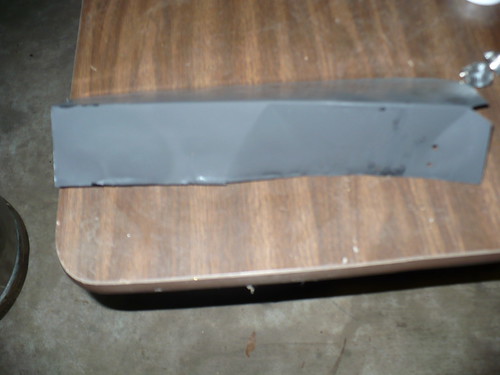
This is one with additional material going to be riveted together. That's a 1/4" rivet in the upper left-hand corner. As you can also see, I've cut away enough material to put a bend into the aluminum.
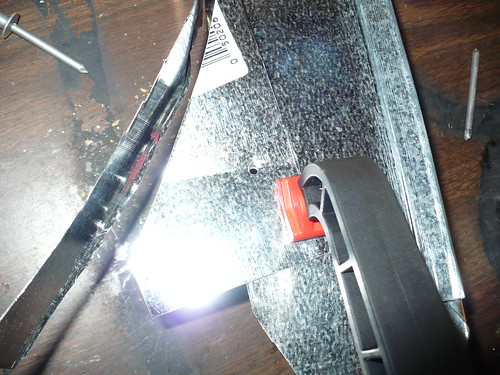
I'm about to rivet said material with a 3/32" rivet
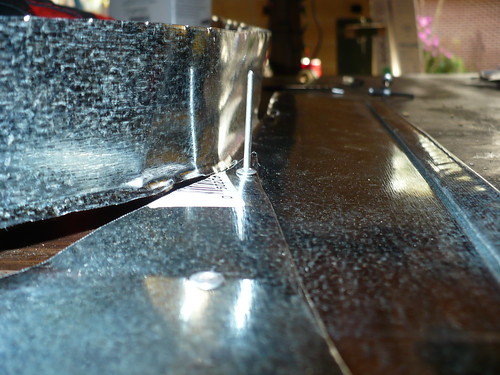
Final product, about to rivet to the keg.
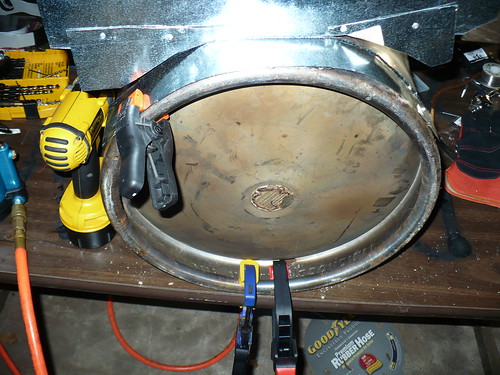
Riveted to the the keg.
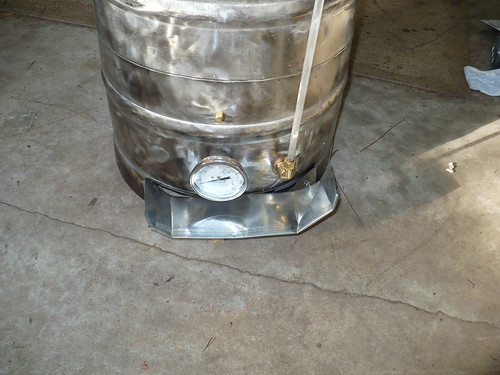
I've used the shields for 3 brews on each keg. I had to lengthen one shield to protect a hose more. So far, I can put my hand on a valve after the keg has been on high flames (enough to start to lick underneath the keg). If you're constantly having to turn your burner down to avoid burning your valves, this is a pretty good solution.
My Blichmann temperature gauge, valves, and hoses were getting singed, and since I couldn't find any solutions, I figured I'd post my answer with a quick write up. Maybe someone else can suggest improvements or shortcomings. I know eventual galvanic corrosion are a concern.
Anyways, here's the bill of materials:
1/4" Aluminum rivets
3/32" Aluminum rivet
1/4" Aluminum Washers
3' of right-angle aluminum flashing
Tools:
Rivet gun(Piston or spring should work)
Drill + 5/16 drill bit
Tin Snips
Here's a picture of the flashing, cut out and the back side painted with high-temp paint. With a layer of paint, I'm hoping corrosion will only be limited to the rivets.

This is one with additional material going to be riveted together. That's a 1/4" rivet in the upper left-hand corner. As you can also see, I've cut away enough material to put a bend into the aluminum.

I'm about to rivet said material with a 3/32" rivet

Final product, about to rivet to the keg.

Riveted to the the keg.

I've used the shields for 3 brews on each keg. I had to lengthen one shield to protect a hose more. So far, I can put my hand on a valve after the keg has been on high flames (enough to start to lick underneath the keg). If you're constantly having to turn your burner down to avoid burning your valves, this is a pretty good solution.



